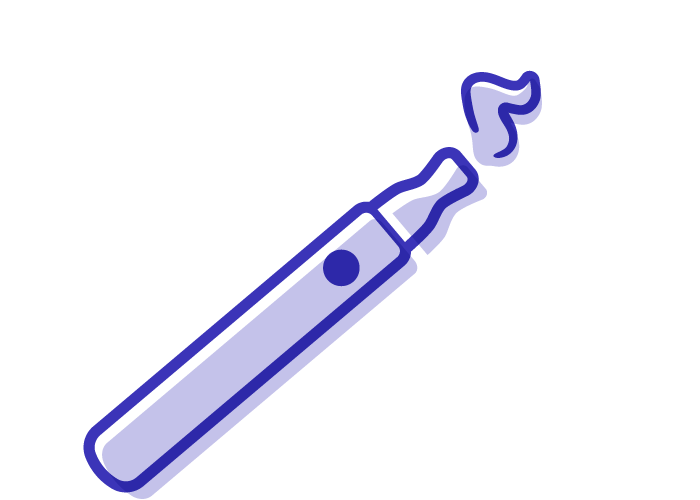Thinking of giving up vaping? Great idea! On this page, you'll find tips to help you prepare to quit, tricks to keep you going, and resources to support you. Happy quitting!

Maybe it all started with you just wanting to try vaping, because your friends were doing it or because the flavours appealed to you... Unfortunately, trying it often means adopting it, because the nicotine present in most vaping liquids is addictive.
If you used to smoke and e-cigarettes were a good ally in helping you quit, maybe it’s time to break free. But be careful not to put yourself at risk of starting to smoke again.

Once nicotine reaches the brain, it triggers the release of dopamine, a hormone that quickly gives you a feeling of well-being. Over time, nicotine alters the way the brain works, making it demand more and more of it to achieve the same state of well-being. This is what we call addiction.
Then, even if you know it would be better to stop vaping, it can be difficult to do so because the body continually demands a new dose of nicotine. If this dose is delayed, you may experience unpleasant effects, known as withdrawal symptoms. Here are a few examples:
In young people aged 25 and under, nicotine can also affect areas associated with memory, concentration, learning and mood, as the brain develops up to this age. It can also reduce impulse control and lead to behavioural problems.
For many people, vaping causes adverse effects on a daily basis, including:
Aerosols can contain chemicals (e.g., toluene, ethylbenzene, acetaldehyde) and metals (e.g., nickel, chromium, lead) that are potentially harmful to health. We already know that vaping can cause damage to the lungs and exacerbate certain existing lung diseases, such as asthma. Studies are still needed to find out more about the long-term effects of vaping on the risk of cancer, cardiovascular disease, etc.
Disposable cartridges made of plastic, heavy metals released from batteries when discarded... Vaping is not green! This waste pollutes soil, water and the habitat of plants and animals.
If possible, take advantage of the period before your quit date to gradually reduce the frequency of your consumption or the nicotine content of the liquid you use. From the day you quit, nicotine replacement therapy (NRT) can be a big help. If you need support in your efforts, you can also consult a pharmacist or a specialist working in a quit smoking centre.
Even though they’re intended for people who want to quit smoking, these pages will give you some useful ideas:

Withdrawal symptoms and strong cravings may put you to the test. This is normal, but it’s all temporary. So hang in there! You'll also need to find ways other than vaping to cope with stressful situations.
These pages may inspire you. They give tips on how to avoid relapses when you quit smoking.
Text messages sent over 8 weeks to the Quit to Win! Challenge registered participants.
The I QUIT NOW support services available year-round:
The Challenge site you’re on right now. Explore it!
Pharmacists and doctors, who can, among other things, advise you and prescribe pharmacological aids to help you stop vaping.
Your friends and family, who can listen to you and encourage you in your efforts.